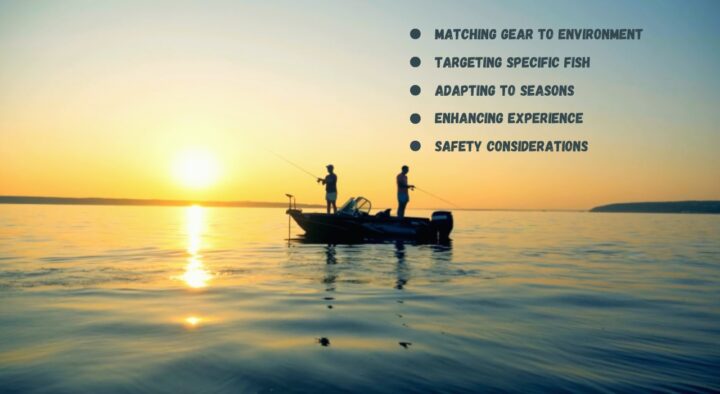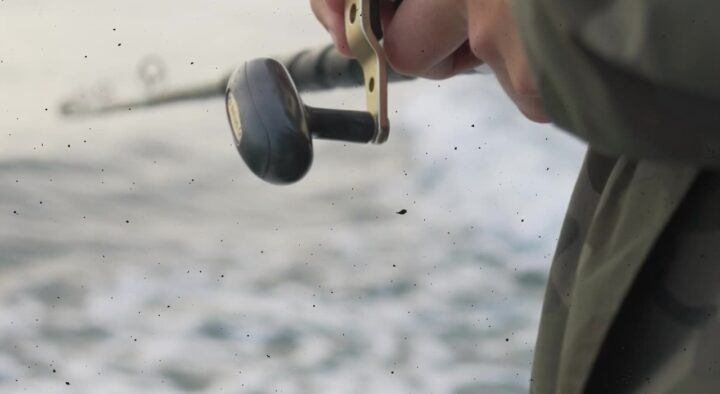Fishing is an enjoyable but challenging hobby for beginners. Success often depends on the right equipment, tailored to your specific needs and goals. Whether you’re aiming to fish in calm lakes, flowing rivers, or the open sea, the gear you choose plays a vital role in your overall experience. Selecting the right rod, reel, line, and bait can spell the difference between frustration and triumph.
In this article, we’ll talk about the essentials you must pack. The list of fishing gear is long, but you don’t need all of them, especially if you’re a newbie. Focus on the basics, master the use of fundamental gears, and in no time, you can improve your fishing skills.
The Importance of the Right Gear for Beginners

Whether you plan to go bow fishing or use a net to chase fresh catch, your gear matters. Choosing the right fishing gear isn’t just about snagging that big catch; it’s a decision that resonates through every aspect of your fishing journey. Below are some compelling reasons for every beginner to invest in the right equipment.
Matching Gear to Environment
Fishing in different water bodies requires specific equipment. A rod perfect for calm lakes might falter in the turbulent sea. The right gear is essential to handle the varied challenges of freshwater versus saltwater, still versus flowing waters.
Targeting Specific Fish
Different fish demand different tactics. Selecting the proper hook size, lure type, and even fishing line can greatly influence your success rate. The right gear, tailored to the fish you are targeting, ensures efficiency and avoids wasted effort.
Adapting to Seasons
Seasonal variations affect fish behavior, necessitating changes in equipment. The lures that attract fish in spring may not work in winter. By understanding seasonal needs and having adaptable gear, you ensure that your fishing trips are productive year-round.
Enhancing Experience
Quality gear doesn’t just increase success; it enhances the entire fishing experience. A reel that operates smoothly, a rod that feels balanced, and a well-organized tackle box can transform a frustrating outing into a pleasurable and rewarding hobby.
Safety Considerations
Fishing can be risky without the right gear. From hooks that don’t break to lines that can handle the weight of the catch, safety should always be paramount. The right equipment minimizes risks and adds to the enjoyment of the sport.
Essential Fishing Gear
Starting your fishing journey means assembling the right toolkit. Each piece of gear plays a specific role, tailored to your fishing environment and targeted species. Websites like Catch & Fillet can provide guidance, offering articles about different fishing products and fishing tips,
Rods and Reels
The choice of rods and reels is foundational. For beginners, spinning rods offer flexibility and ease of use. More experienced anglers may prefer baitcasting reels, which provide precision but demand more skill.
Rod length also matters. Longer rods cast further but can be challenging to control, while shorter rods provide better accuracy but limited distance. Materials like graphite or fiberglass play a role, each offering unique benefits. Aligning these factors with your target species and fishing style is essential.
Fishing Lines
Selecting the right fishing line is both art and a science. A line that’s too strong may lose sensitivity, while a line too weak may break under pressure.
Monofilament lines are versatile and forgiving. Braided lines, thin and strong, are suitable when high sensitivity is required. Fluorocarbon lines, nearly invisible underwater, cater to cautious fish. Matching these properties to your specific fishing scenarios enhances success.
Hooks and Lures
Choosing the right hook size and lure type ensures success. Whether you’re using soft plastic lures or spinnerbaits, among others, they must match the target fish and environment. Small hooks suit panfish, while larger ones cater to big game fish like catfish or bass.
Understanding what attracts specific fish and selecting the corresponding lure is part of the thrill of fishing. Guides and tutorials can provide insights to demystify these choices. The right combination unlocks potential, making fishing an exciting and rewarding experience.
Other Essentials
The beauty of fishing lies not only in the prominent gear but also in the smaller, often overlooked essentials that smooth out the experience. A well-organized tackle box, acting as a fisherman’s toolbox, keeps essential items like swivels, sinkers, and extra hooks within reach.
Pliers and a multi-tool knife are indispensable for tasks like hook removal or cutting lines. The right tool at the right moment can mean the difference between a rewarding catch and a missed opportunity.
Clothing also plays a vital role. Weather-appropriate clothing ensures comfort, while specialized fishing garments may offer sun protection, insect repellent, or water resistance.
Lastly, embracing eco-friendly practices, such as using biodegradable lines or lead-free weights, demonstrates respect for the natural world.
Building Your Starter Kit

Constructing a fishing starter kit is both a personal and practical endeavor. It requires careful consideration, guided by various factors.
Budget Considerations
Quality gear doesn’t necessarily equate to exorbitant prices. By striking a balance between quality and affordability, you can assemble a functional and dependable starter kit. Consider starting with essentials, and gradually upgrading as you become more experienced.
Tailoring to Needs
Personalized gear selection is paramount. Consider your primary fishing locations, targeted species, and specific preferences. Are you fishing in freshwater or saltwater? Do you prefer shore fishing or boat fishing? Answering these questions will guide your choice of rods, reels, lines, and lures, ensuring that your gear is customized to your unique requirements.
Safety and Compliance
Safety must never be an afterthought. Equip yourself with proper safety gear, such as life jackets if you’re on a boat. Familiarize yourself with local fishing regulations, obtain the necessary permits, and adhere to local catch and release policies.
Technology Integration
Modern fishing has seen the integration of technology. Tools like portable fish finders, weather apps, or electronic bite alarms can enhance your success rate and add a new dimension to your fishing experience.
Conclusion
Starting to fish is an exciting adventure, full of fun, learning, and connection with nature. Building your fishing starter kit is more than just buying gear; it’s about choosing the right tools that fit your needs, budget, and interests. From selecting rods and reels to thinking about the environment, every decision helps you enjoy fishing in your way.
My name is Bobana Hemun, and I’m a dedicated occupational therapist with a background in medicine from the Faculty of Medicine in Novi Sad. After my tenure at the Oncology Institute of Vojvodina, I ventured into the dynamic world of SEO. During my leisure time, you’ll often find me immersed in outdoor and survival activities. I find solace in yoga, rejuvenation in hiking through nature’s wonders, and nurturing my green thumb while tending to my plants.